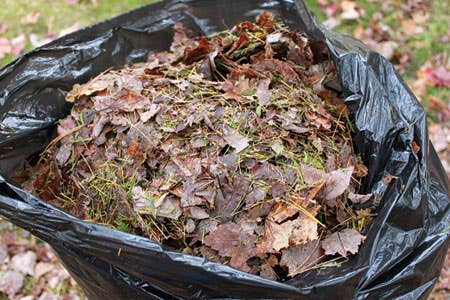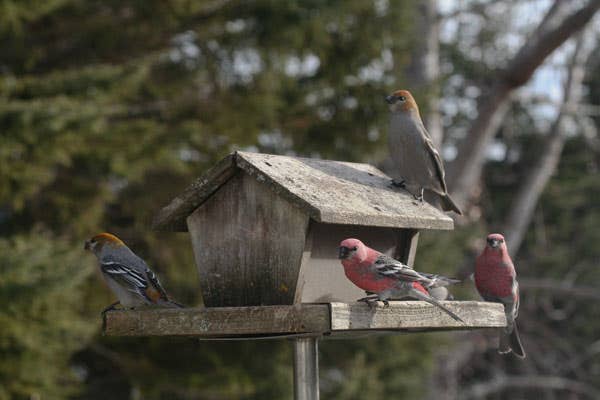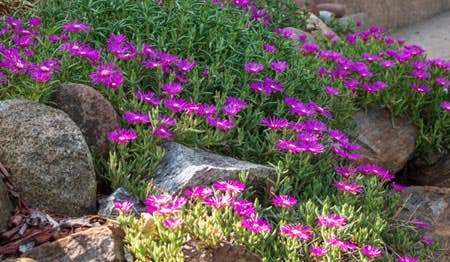Q&A with Bob Polomski 6
Extension Consumer Horticulturist, Clemson University Here in Mississippi, many of the old homesteads have roses in their yards. They seem to receive little, if any, care and still they look…
Extension Consumer Horticulturist, Clemson University
Here in Mississippi, many of the old homesteads have roses in their yards. They seem to receive little, if any, care and still they look gorgeous. Can you tell me how to root cuttings from them?
–B.A., Kosciusko, MS
Answer: The collecting of cuttings from these tried-and-true roses is sometimes referred to as “rose rustling,” although it is courteous to ask the owner's permission first. Cuttings are best taken from the current season's shoots that have just flowered. The shoots should be firm and about the diameter of a drinking straw. Place them in a plastic bag with a moist paper towel and store them in an ice-filled cooler until you get home.
When you get home, shorten each cutting to five or six inches. There should be at least three leaves on each. Next, remove the lowest leaf and wound the bottom of the stem with a razor blade or sharp knife by making a one-half- to one-inch vertical slit through the bark. Roots will emerge from the edges of this wound.
Dip the end of each cutting in a rooting hormone containing 0.1% indole-butyric acid (Hormodin 1 or Hormex No. 1).
Insert the cuttings in a pot filled with equal parts moistened peat and perlite. Use a pencil to make a hole in the mix and then insert each cutting so at least one leaf node is below the surface. Firm the medium around the cutting and then settle it in with a fine spray of water. A six-inch pot can accommodate a half-dozen cuttings.
Put the pot in a clear plastic bag and move it to a shaded location outside—against the north wall of your house or under a tree. Alternatively, you can sink the pot into the ground in a shaded location and cover it with a clear plastic two-liter soda bottle whose bottom has been cut off.
You will need to keep the mix moist and ventilate the enclosure if there's too much condensation inside. With a soda bottle you can simply take off the cap.
The cuttings should root in four to six weeks. New leaves will indicate that you've been successful, as will resistance when you tug gently on a stem.
Once cuttings are well rooted, remove the bag (or soda bottle) and pot them up in individual pots. Keep these moist and shaded, gradually exposing them to brighter light to harden them off.
Are there certain plants I can grow to encourage beneficial insects in my garden?
–C.R., Lawton, MI
Answer: Beneficial insects include a wide range of insect predators and parasites. These include not only the well-known ladybugs and praying mantids, but a great many smaller insects, such as lacewings, syrphid flies, tachinid flies, braconid wasps, and trichogramma wasps, to name just a few. They are the natural controls for many garden pests, from aphids to tomato hornworms.
While the larvae feed on insects, most of the adults rely at least in part on the nectar and pollen produced by flowering plants. Several plant families are particularly important food sources. These include the carrot family (Apiaceae). Consider growing Queen Anne's lace (Daucus carota) or bishop's flower (Ammi visnaga). The daisy family (Asteraceae) is another good source, with plants such as yarrow (Achillea spp.), blanketflower (Gaillardia spp.), coneflower (Echinacea spp.), coreopsis, feverfew (Tanacetum parthenium), and goldenrod (Solidago spp.). The mustard family (Brassicaceae) supports beneficials, with basket-of-gold (Aurinia saxatilis) and sweet alyssum (Lobularia maritima). A good number of edible crucifers do, too, if they are allowed to bloom. These include arugula, Swiss chard, pak choi, and tatsoi. Finally, several members of the figwort family (Scrophulariaceae), including stiff beardtongue (Penstemon strictus) and spike speedwell (Veronica spicata), provide sustenance.
As you can see, it is possible to assemble quite an attractive flowerbed with the goal of supporting biological pest control. For maximum benefit, try to maintain overlapping bloom periods to provide the beneficial insect adults a steady supply of food.
Tiny brown spots are stuck to the white vinyl siding of my house. I can scrape them off with my fingernail, but not easily. My neighbor says that these spots are some kind of fungus. Is that true?
–T.P., Oxford, OH
Answer: What you have observed are the spores of artillery, or shotgun, fungus (Sphaerobolus stellatus). This white rotting-wood decay fungus feeds on a wide range of decomposing organic matter, from landscape mulches to manure and dead wood.
The fungus is distinguished by its ability to shoot its spores 10 to 15 feet into the air, ejecting them toward the light, or toward light-colored objects, such as the vinyl siding of your house. The dark brown spores, called gleba, are sticky and adhere to the sides of homes, as well as the shiny surfaces of cars, as if glued. The phenomenon is typically most conspicuous during a wet spring or fall.
Newly deposited spores can be scrubbed off after being soaked with soapy water and allowed to stand for a few minutes. Older spores that have dried, however, will be very difficult to remove, even with vigorous scrubbing.
The June 2001 issue of the Journal of Environmental Horticulture contains a study done on a variety of mulches, with an eye to minimizing the growth of artillery fungus. The researchers found that Atlantic white cedar, cypress, and large pine-bark nuggets were the least likely to be colonized by this fungus. But for the most complete control, they recommend replacing the mulch adjacent to homes with either an inorganic mulch, such as stone, or a living groundcover.
My lawn-care company representative says he can tell that my soil is acid and compacted just by which specific weeds are growing in it.
Do weeds really reveal the soil's condition?
–R.T., Manassas, VA
Answer: Certain weeds are indeed fairly reliable indicators of growing conditions. Although a soil test is the surest way to confirm a soil's deficiencies, you can get a good idea of the growing conditions by recognizing key species.
Acid soils, for example, typically support an abundance of sorrel or sour grass (Rumex acetosella). This is a close relative of the salad herb, which has larger leaves and a more refined lemony taste.
Compacted soils tend to favor goosegrass (Eleusine indica), prostrate knotweed (Polygonum aviculare), prostrate spurge (Euphorbia supina or Chamaesyce humistrata), annual bluegrass (Poa annua), common chickweed (Stellaria media), mouse-ear chickweed (Cerastium vulgatum), and rushes (Juncus spp.).
Low fertility favors legumes such as white clover (Trifolium repens) and black medic (Medicago lupulina), as well as carpetweed (Mollugo verticillata), poor joe (Diodia teres), quackgrass (Agropyron repens), sorrel, yarrow (Achillea millefolium), and yellow woodsorrel (Oxalis stricta).
In damp, poorly drained areas, look for annual bluegrass, barnyard grass (Echinochloa crus-galli), common chickweed, ground ivy (Glechoma microcarpa), mouse-ear chickweed, moss, pennywort (Hydrocotyle spp.), rushes, sedges (Carex spp.), speedwells (Veronica spp.), and violets (Viola spp.).
The secret to reducing the abundance of any of these weeds is to change the conditions that favor their growth. Soil improvement, not herbicide, is the best way to ensure that the grass in your lawn gets an upper hand.
How can I tell when a watermelon is ripe?
–V.H., Alvin, TX
Answer: Knowing the variety and the days to maturity will give you a ballpark figure for when you should begin checking for maturity. Then look for signs of ripening on both the vine and the fruit. The tendril closest to the stem end of the melon will turn brown as the fruit ripens. Also, the underside of the watermelon where it rests on the ground will change from green to a yellowish white. Finally, feel the skin. As the melon ripens, the shiny skin will turn dull. It will also feel slightly rough, and as you run your hand around the melon's center you may notice a certain irregularity, as if you were feeling the muscles of a tensed calf.
Some people can pick a ripe melon by the sound it makes when you thump it. This is a more subjective indicator of maturity and requires a good ear. Immature melons have a metallic ringing sound after being thumped. A really deep thud usually indicates a melon that is overripe. One Japanese watermelon breeder likened the sounds to striking your forehead, your chest, and your belly. You want to pick a melon that matches the sound your chest makes when thumped. H







